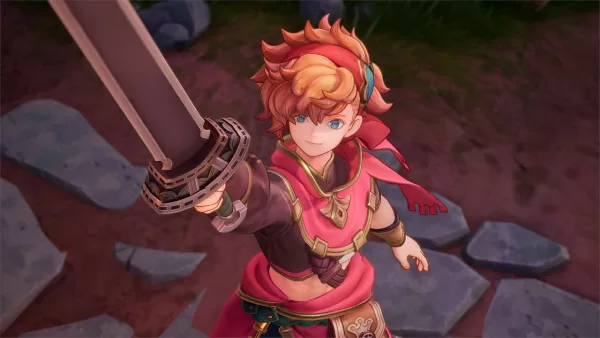Visions of Mana Impressions | A Potential Fighter
Is Visions of Mana another JRPG to lose yourself into?

The Mana series, once a cornerstone of the JRPG genre, holds a special place in the hearts of many gamers who grew up with its enchanting worlds and vibrant characters. The franchise, known for its pioneering action-RPG mechanics and lush, whimsical art style, set a high bar for what games could be back in the ’90s. Now, in a landscape overflowing with JRPGs, Visions of Mana, the fifth main installment in the series, faces the daunting task of standing out among heavyweights just this year like Granblue Fantasy Relink, Shin Megami Tensei V: Vengeance, and Eiyuden Chronicle: Hundred Heroes. We got the opportunity to play the game ahead of launch. Does it rise to the occasion? Our Visions of Mana first impressions suggest that it might do just that.
Visually, Visions of Mana is nothing short of breathtaking. The game’s art direction is a masterclass in bringing fantasy to life, with environments and character models bursting with color and detail. The aesthetic is unmistakably Mana—a perfect blend of the nostalgic and the modern, making it feel both like a warm return and a fresh adventure. Every corner of the game world feels alive, inviting players to explore and lose themselves in its beauty.

When it comes to gameplay, Visions of Mana feels polished and engaging. The addition of mechanics like double jumps, air dashes, and sprinting makes traversal more dynamic than in previous entries. Combat, while weighty and impactful, leans towards a slower pace, demanding a more strategic approach. There’s no combo system, which might come as a surprise to fans of Trials of Mana, but the methodical nature of the battles forces you to think before you act, especially when dealing with enemies that bombard you with area-of-effect attacks.
Exploration in Visions of Mana is satisfying. The game opts for compact, open areas rather than a sprawling open world. This design choice works in its favor, as it allows players to thoroughly explore each area within a few minutes, uncovering hidden treasures, engaging in side quests, and enjoying some light platforming. It’s more exploration than previous Mana games typically offered, though the design feels more akin to something out of Genshin Impact, minus the live service elements.
The combat system is where Visions of Mana shines brightest, even if it feels a bit restrained compared to its peers. The game introduces aerial combat and a tag-based system where you can swap between three heroes at the push of a button, each bringing their own strengths. The class system is a standout feature, allowing for a level of customization that promises depth. The protagonist, for instance, starts with a great sword but can switch to an Aegis class, offering a different playstyle with a spear and shield combo that emphasizes defense over raw power.

The potential for character customization is exciting, especially once you go deeper into the runtime. Each character has four interchangeable magic spell slots, offering a variety of debuffs, elemental attacks, and healing spells. In a few hours, you can find yourself playing with a robust system that could cater to a range of playstyles.
Overall, Visions of Mana shows a lot of promise. It successfully recaptures the charm and magic of the original Mana games while introducing enough new elements to keep things interesting. The only real gripe I have is with the voice acting of the English cast, who sounds more like they’re having a first read-through of the script. The question remains whether it can truly stand out in a crowded market, but for fans of the franchise and newcomers alike, it’s shaping up to be an adventure worth embarking on.

